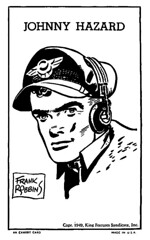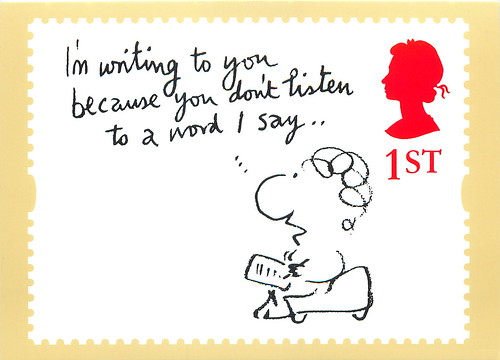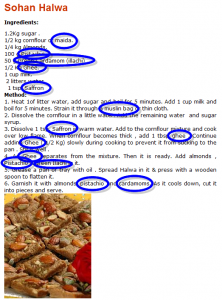Many of my friends are music fans.
Actually, I don’t know anyone who doesn’t like some kind of music on some level. So let me rephrase that… These guys are hard-core music fans. You know those guys who go to football games in January wearing nothing but paint? These guys like music like those guys like football.
I don’t get it. I don’t even pretend to get it.
The great thing is, I don’t really need to get it. Forget for a moment that these are my friends. Let’s pretend for a moment that they’re prospects I’m trying to sell to.
The best way to sell someone is not to sell them at all. It’s a very tough concept for most new copywriters to fully grasp, since it’s a copywriter’s job to make the sale. But the very best way to get someone to buy from you is to connect with them on a deep level. If you truly connect with them and they get to know, like and trust you, they will make the decision all on their own to buy from you.
The better you know your prospects, the easier it will be to find common ground and connect with them. The more deeply you can connect to what’s truly meaningful to them, the less price sensitive they become.
One of my friends just bought concert tickets for his whole family. The tickets were over $50 each, which he called “reasonable”.
Now I’m not a big music fan. $50 does not sound reasonable to me. How long is a typical concert? 2-3 hours? There’s no way in the world I’d pay $50 per ticket to watch a movie, which doesn’t seem all that different from watching a concert. But to him that price seems reasonable.
That’s price insensitivity.
This same friend owns a dozen electric guitars. A dozen. How many guitars can one person actually play? His least expensive guitar cost several hundred dollars. He has some that cost multiple thousands of dollars.
That’s price insensitivity.
He’s not rich. He has a relatively high income, but not an astronomical one. It’s only in the high five figures. His home is worth less than $250,000. He doesn’t drive a luxury car. He doesn’t dress fancy, take exotic vacations, eat at expensive restaurants or send his kids to exclusive private schools. I’m not sure if he even knows where the country club is.
Yet $50 tickets to a concert are “reasonable” and in his world there’s no irony whatsoever in owning a dozen guitars.
That’s price insensitivity.
I should add that this friend is not unique. I am friends with at least a half dozen people who own multiple guitars each. (What is it with music fans and owning guitars?)
Now let’s say that I’m selling something completely non-musical; let’s say BBQ grills. While any one of these friends may be in my universe of potential customers, very likely none of them is my key ideal customer.
Let’s say that for some reason I want to write a promotion specifically targeted to sell to my second and third level prospects (first level being my ideal prospects who are true grilling aficionados; the guys you see outside grilling when there’s two feet of snow on the ground).
At least knowing something about where a prospect’s primary interests lie makes it easier for me to forge a connection based on common interest. Or at least to present my offer in such a way that it plays on his deepest interest.
That’s the gateway to price insensitivity.
That’s marketing nirvana.







